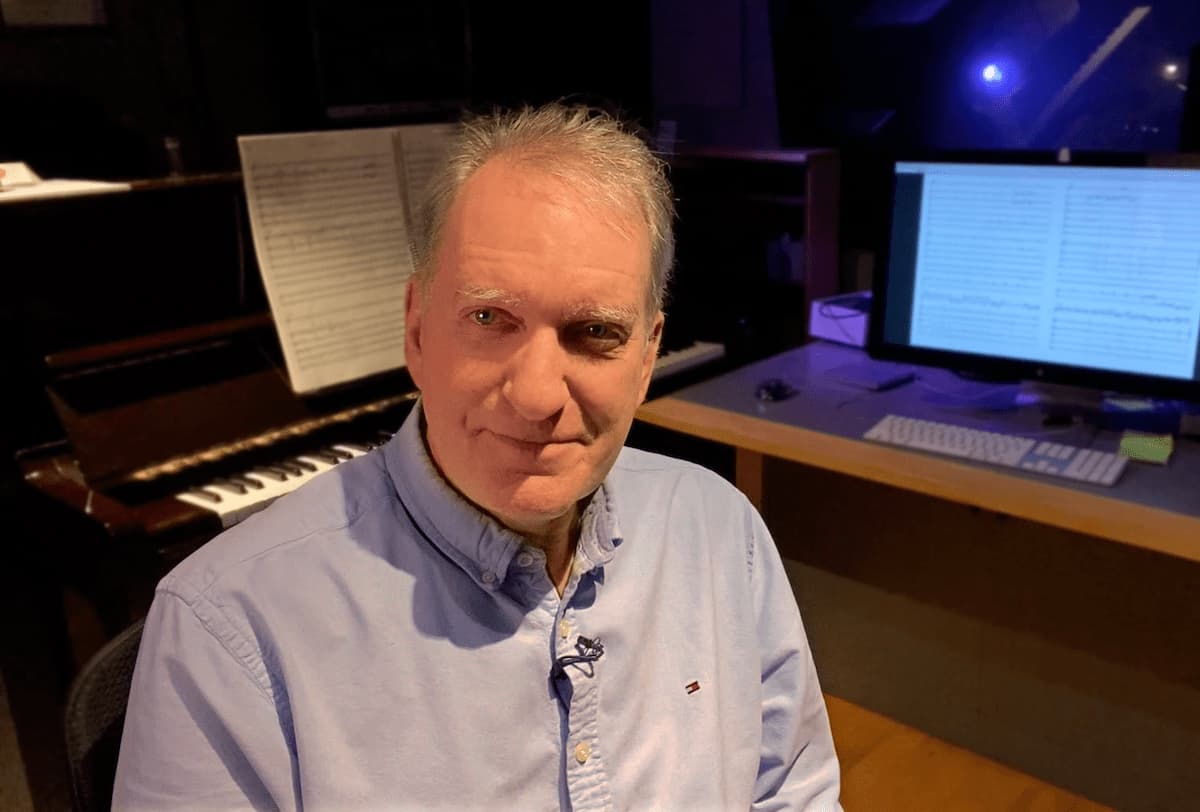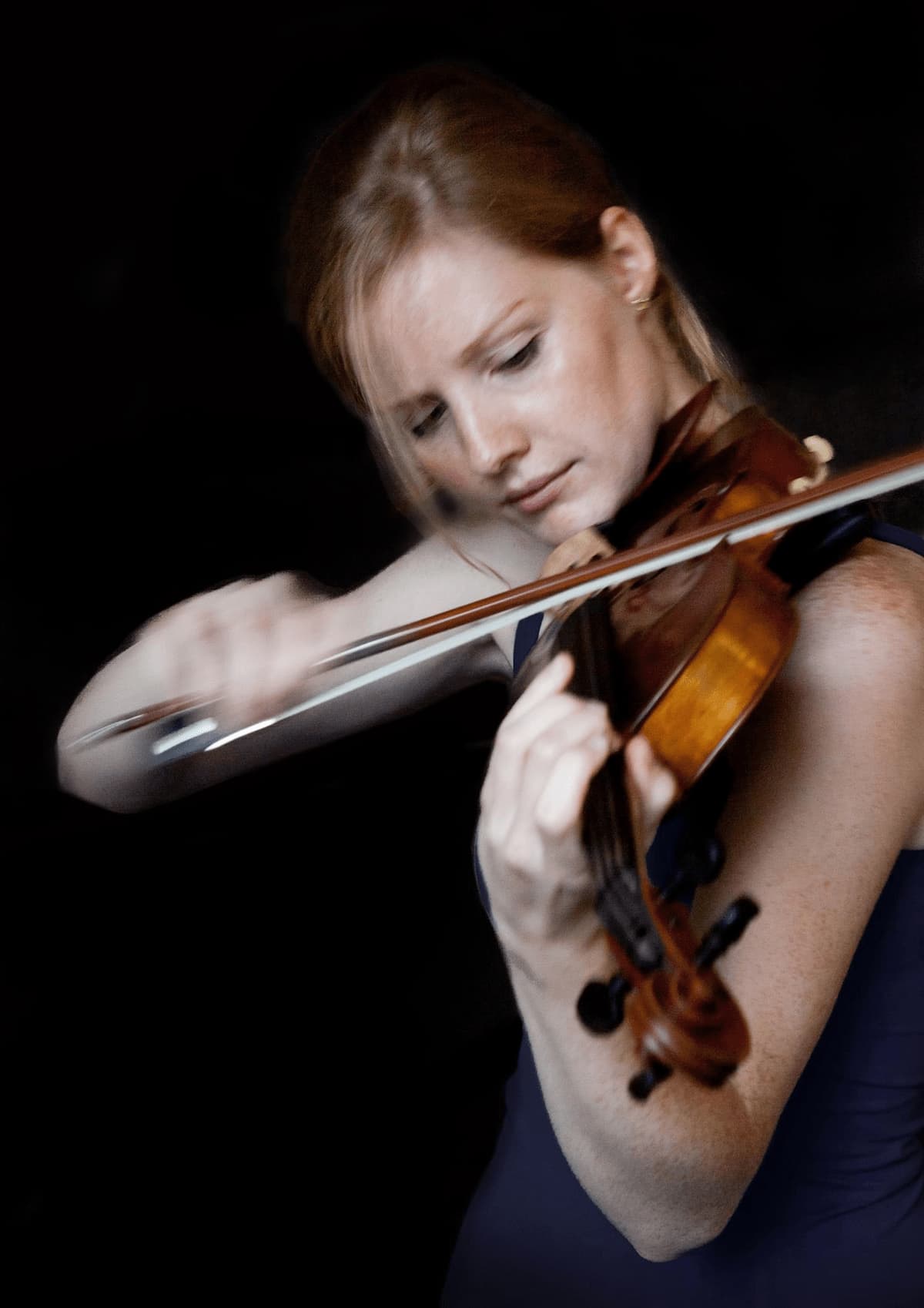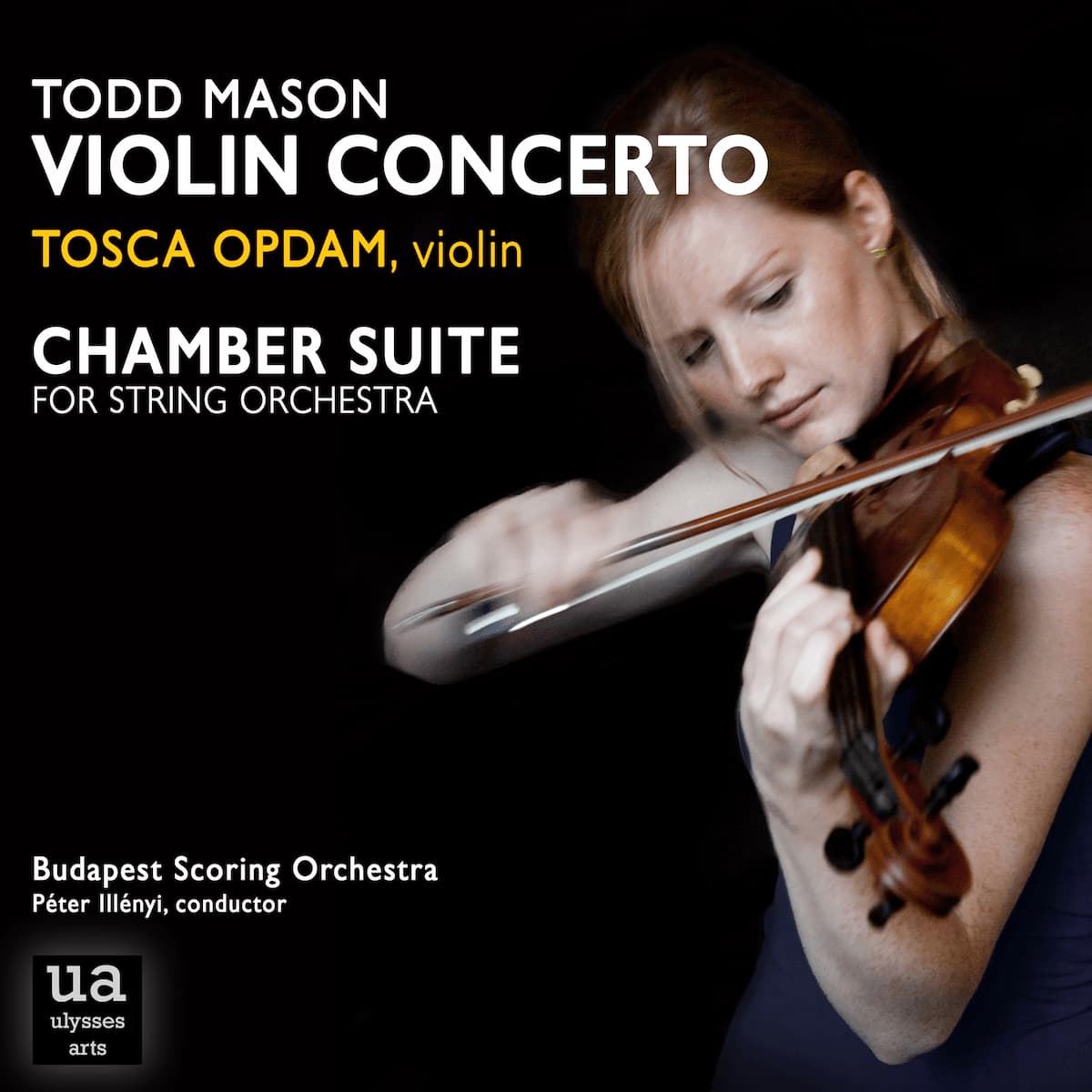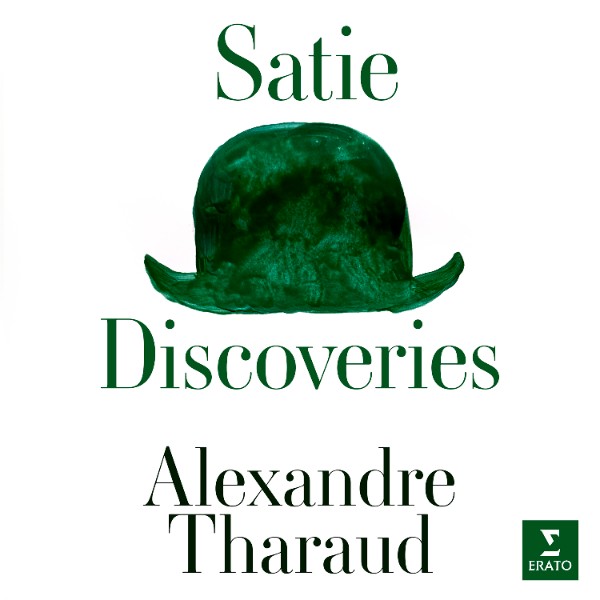The worldwide lockdown of COVID gave the world breathing space, in which to sit or to explore, to do the things there was never time for, to create. For American composer Todd Mason, the time was devoted to something he’d wanted to do for years: write a violin concerto.
In attempting the concerto form, Mason first had to think about what a concerto for the 21st century might be. More than a contest of a soloist against (or with) an orchestra, he wanted to create a compelling musical story.

Todd Mason
He begins the concerto in an unusual way for any piece of classical music: a soft gong. As its sound unfolds and resonates, the winds begin to scurry and there’s a hint of a fanfare in the brass. The strings take over, with a thick repeating sound that breaks with the violin’s entrance. The violin seems to be pulling its melody from the early wind and string patterns but soon breaks free to create a song in melodic isolation. The violin writing is quite free, sounding almost improvisational. And so, the concerto goes, all in one 24-minute movement. Meditation comes to the violin and then is taken up by the orchestra. Two violin cadenzas define sections of the work. Each orchestral instrument (flute, bassoon, bass clarinet, piccolo) has things to say to the violin. She considers them and then goes on alone. There are brass chorales, sections of harmonic and rhythmic dissonance, and, with the second cadenza, the violinist takes back the reins.

Tosca Opdam
It’s an interesting and virtuosic work that advances our idea of the concerto into the new century. More than an exchange of musical ideas, we hear musical ideas proffered and discarded (or accepted) and the work developed from the conversation, rather than the fight, between the soloist and orchestral voice. The soloist, young Dutch violinist Tosca Opdam plays with assurance and beauty.
Todd Mason – Violin Concerto (Excerpts)
The second work on the recording is the Chamber Suite for String Orchestra, written in 2020, is a reworking of Mason’s earlier String Quartet No. 2. It opens, Allegro deciso, which he calls ‘musical caffeine’: 7/8 time and tutti rhythms give it a wonderful opening drive. It strikes a balance between tonality and polytonalism, with, he says, ‘a middle section reminiscent of Armenian folk melodies’. He incorporates a particular Armenian technique of a solo melody played above an open string that gives a unique open sound.
Todd Mason – “Chamber Suite” for string orchestra
Each successive movement builds on the foundation of the first. The second movement, a slow Espressivo, is strongly emotional, with slow-moving lines supporting a strong melody upper body.
The third movement, Spirito, wakes us up again and pushes us out into the milling population. Everything is in motion, everything is talking, and we get caught up in the musical conversation. However, it’s not an American conversation – it’s still salted with the middle European rhythms and melodies we discovered in the first movement. The orchestra, led by Péter Illényi, here called the Budapest Scoring Orchestra, is made up of members of the Budapest Philharmonic, Concerto Budapest, and the Hungarian State Opera Orchestra.
This recording brings these two new pieces together in an interesting contrast. The Violin Concerto defines new ground in the concerto repertoire, while the Chamber Suite seems to return us to compositions by composers such as Kodály or Bartók. A superb recording that should be listened to time and again.

Todd Mason: Violin Concerto and Chamber Suite, with Tosca Opdam, violin, Budapest Scoring Orchestra with Péter Illényi, conductor. Ulysses Arts (UA230080)
Todd Mason Violin Concerto and Chamber Suite, released by Ulysses Arts on 29 Sep 2023.
For more of the best in classical music, sign up for our E-Newsletter


For Maureen Buja:
Maureen,
I just wanted to take a moment to thank you for your wonderful review of my new Violin Concerto, performed by Tosca Opdam. Your writing shows that you listened carefully. And of course we’re delighted that you enjoyed the experience.
It’s one thing for a composer to create a new work – a noble pursuit I suppose – but it means so much more to get thoughtful reactions from the right people — people who know music and appreciate all the work involved because, only then, do we know that our efforts are actually reaching people in a meaningful way.
And … reviews like yours also help for our next crucial step which is, hopefully, the concert hall.
Thank you, again!
-Todd Mason
Los Angeles
Dear Todd –
Thank you for your comment – it’s always a pleasure to find new music that is so skilfully created and performed!
My pleasure!
Maureen